OLICNC TAKING ABOUT BASIC KNOWLEDGE OF 6 TEPES OF HSK TOOL HOLDERS
Differences between 6 types of HSK tool holders with different interfaces
Type A, automatic tool changer with central coolant
Type B, automatic tool changer with internal coolant
Type C, manual tool changer with central coolant
Type D, manual tool changer with through-face coolant
Type E, automatic tool changer with internal coolant, high-speed version
F type, automatic tool changer without central coolant, high speed type
There are four kinds of commonly used HSK tool holders: HSK-A (automatic tool change with internal cooling), HSK-C (manual tool change with internal cooling), HSK-E (automatic tool change with internal cooling, high-speed type) and the latest machine tools Equipped with HSK-F (automatic tool changer without central coolant, high-speed type).The biggest difference between HSK-A and HSK-E is:
- Type A has a transmission groove and type E does not. Therefore, the A-type transmission torque is relatively large, and some heavy cutting can be carried out relatively. The torque transmitted by the E-type is relatively small, and only some light cutting can be performed.
- In addition to the transmission groove, there are also manual fixing holes and direction grooves on the A-type tool handle, so the balance is relatively poor. The E type does not, so the E type is more suitable for high-speed machining.
The mechanisms of HSK-E and HSK-F are exactly the same, and their differences are:
The E-type and F-type shanks of the same name (such as E63 and F63), the taper of the F-type shank is one size smaller. That is to say, the flange diameters of E63 and F63 are both φ63, but the taper size of F63 is only the same as that of E50. Therefore, compared with E63, the speed of F63 will be faster (the spindle bearing is small), and the HSK-F type tool holder can reach 50,000rpm, or even higher speed, which is deeply loved by users in the mold industry.
The tool system usually refers to the tool system composed of cutting tool, tool holder and chuck. The relationship between the three is that the tool is loaded into the tool holder through (the chuck), and the tool holder is connected to the machine tool spindle. The high-speed machining tool system has a significant impact on the dimensional accuracy and surface quality of the formed workpiece, and also affects the high-speed cutting reliability and machine tool processing performance. It has become the key technology of high-speed cutting systems.The two most commonly used systems are 7:24 taper and 1:10 taper:
- BT tool system
Conventional CNC machine tools usually use 7:24 taper solid long toolholders. There are currently five specifications that have been standardized, namely NT 2080 (traditional type), DIN 69871 (German standard), ISO 7388/1 (international standard), ANSI/ ASME (American Standard) and BT (Japanese Standard). Among them, the BT tool holder is widely used because of its simple structure, low cost and convenient use.
When the BT tool holder is connected with the machine tool spindle, it is only positioned by the tapered surface. Under high-speed conditions, due to the difference in material properties and dimensions, uneven deformation of the spindle taper hole and the matching tool holder occurs at the same time. The expansion of the spindle taper hole is larger than that of the tool holder. This results in a taper hole clearance between the mating surfaces of the tool holder and the spindle.
The 7:24 standard taper long shank only keeps 70% of the front section in contact with the spindle, and there is a small gap in the rear section, which causes the tool to produce radial circular runout and destroys the dynamic balance of the tool system. Under the action of the tensioning mechanism, the BT tool holder moves in the axial direction, which weakens the axial positioning accuracy of the tool holder and causes machining dimensional errors. The large taper also limits the high speed of the ATC (Automatic Tool Changing) process, reduces the repeatability of positioning and makes it difficult to remove the tool holder.
Due to the structural and functional defects of traditional machine tool connections, it has been unable to meet the requirements of high-speed machining such as high precision, high efficiency, static and dynamic stiffness, and dynamic balance. Foreign manufacturers and research institutions continue to develop and introduce various new types of tool holders such as HSK series, American KM series, Japanese Big-Plus and Showa D-F-C series.
- Research status of foreign new tool systems
2.1 HSK tool system
HSK tool holder (German Hohl Shaft Kegel abbreviation) is a double-sided clamping tool holder developed by the Machine Tool Laboratory of Achen University of Technology, Germany, with a taper of 1:10 (2°51’78”) and a tapered surface. (radial) and flange end face (axial) double-sided positioning and clamping. When working, the short hollow taper shank and the taper hole of the spindle can be in full contact, which plays a centering role and ensures the connection rigidity of the spindle. It plays a role in the tensioning mechanism.
When the pull-down rod moves to the right, the elastic clamping jaws on the tapered surface at the front end of the tool holder will expand radially, and at the same time, the outer cone surface of the clamping jaws and the 30° cone surface of the inner hole of the hollow short taper shank begin to contact and cooperate. At this time, the hollow short cone The shank is elastically deformed, and its end face is close to the end face of the spindle, eliminating the gap (about 0.1mm) between the flange of the HSK tool shank and the end face of the spindle.
The outstanding feature of the HSK tool system is that it adopts the double positioning of the end face and the conical face synchronous contact to ensure the reliability of cooperation. Similar to the BT taper, the radial accuracy of HSK depends on the contact characteristics of the taper surface (the radial accuracy of the two can reach up to 0.2um). The axial accuracy of the HSK interface depends on the contact end face, independent of the axial clamping force, but only by the structure, which is significantly different from the BT taper shank.
Another feature of HSK tool shank is that it is a hollow taper shank, which can produce enough elastic deformation with a small clamping force, and the radial expansion of the hollow thin wall keeps corresponding to the deformation of the inner taper hole of the spindle. The hollow shank also provides an installation position for the clamping pull stud to realize clamping from the inside to the outside, and the hollow shank can also have built-in cutting fluid. The internal clamping method can convert centrifugal force into clamping force to ensure the clamping reliability of the high-speed rotating tool holder.
The third feature of the HSK tool holder is the use of a small taper of 1:10 to reduce the clamping force of the tapered part, improve the bearing capacity of the HSK interface, and at the same time ensure the good positioning of the tapered part. HSK tool holder and spindle connection structure and principle
https://olitools.com/wp-admin/post.php?post=1209&action=edit
2.2 KM tool system
The KM handle was developed by Kennametal in the United States in 1987 with a taper of 1:10. Two symmetrical circular arc grooves are arranged on the pull rod of the clamping mechanism, and the bottom of the grooves is two arc-shaped inclined surfaces. When the tool handle is clamped, the tie rod moves to the right, and the steel ball is pushed out along the slope of the groove and stuck on the slope of the locking hole on the tool handle.
After the tool shank is tightened into the spindle hole, the hollow thin wall produces elastic deformation, so that the end face of the tool shank and the end face of the spindle are in close contact, and the taper surface and the end face are simultaneously contacted and positioned on both sides.
The KM system is also a 1:10 hollow short taper shank, which is connected by three-point contact and double steel ball locking, so that the KM system has the advantages of high rigidity, high precision, fast clamping and simple maintenance.
The research shows that compared with BT tool holder, HSK tool holder and KM tool holder have better static and dynamic stiffness. The tightening force, locking force and dynamic stiffness of the KM tool holder are significantly larger than those of the HSK tool holder, and the overall performance is the best. The comparison of the structure and performance of the three (table omitted) shows that the KM tool holder also has some deficiencies. Larger interference, the required clamping force is at least 3 times that of the HSK shank.

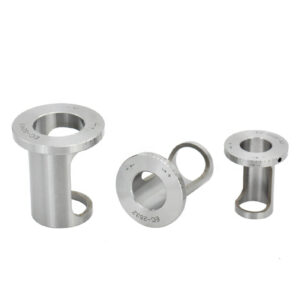 Machine Tools U drill Eccentric Sleeves EC Type 2025 2532 3240 40-50 Reducing Sleeve Eccentric Sleeves for U Drill
Machine Tools U drill Eccentric Sleeves EC Type 2025 2532 3240 40-50 Reducing Sleeve Eccentric Sleeves for U Drill 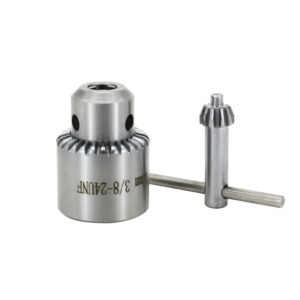 Key type 1-13mm JT6 Stainless Steel Drill Chucks 1/2-24UNF type key drill chuck
Key type 1-13mm JT6 Stainless Steel Drill Chucks 1/2-24UNF type key drill chuck 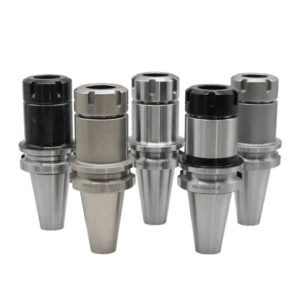 BT 40 ER 32 High - speed & Fine - balanced Tool Holders for CNC Lathe Collet chuck holder
BT 40 ER 32 High - speed & Fine - balanced Tool Holders for CNC Lathe Collet chuck holder 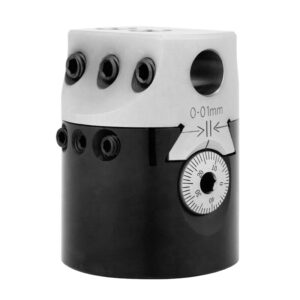 High precision F1-18 Boring Heads Adjustable Milling Machine F1 Metric Size 50mm 75mm 100mm Boring Heads
High precision F1-18 Boring Heads Adjustable Milling Machine F1 Metric Size 50mm 75mm 100mm Boring Heads  BT-FMB Face Milling Tool Holder
BT-FMB Face Milling Tool Holder 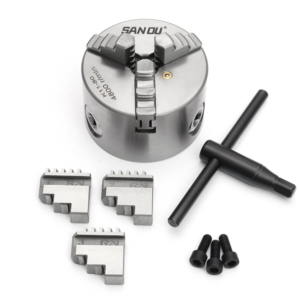 K11-80 80mm 3 Jaw Lathe Chuck Manual Chuck Self-centering Lathe Chucks
K11-80 80mm 3 Jaw Lathe Chuck Manual Chuck Self-centering Lathe Chucks 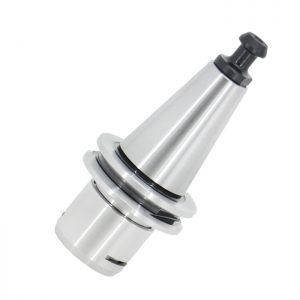 ISO Tool Holders
ISO Tool Holders 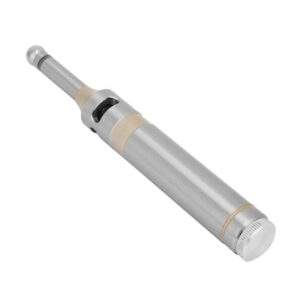 Machine tools Edge Finder with Sound & Lamp drill press center edge finder for CNC
Machine tools Edge Finder with Sound & Lamp drill press center edge finder for CNC